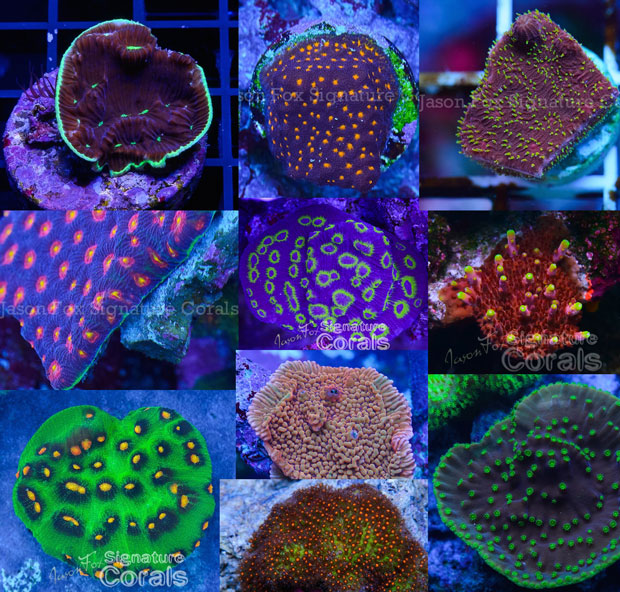Recently I have tried to go back in time and enjoy one of the aspects of hobby that I really miss: the road trip. As I discussed in an article last year, one of the things that the internet has sadly replaced in a lot of instances is the need for us to get together and take a drive to see shops or other people’s tanks, and in doing so having the opportunity to talk reefs for the length of the trip and learn from others first hand.
During the past couple of weeks, I tried to rectify this by not only taking a road trip with my friend Sanjay around Western Pennsylvania and Ohio, as well as a road trip to the shops and Denver Aquarium around Denver during Reefstock, but I also took the drive down to see Jason Fox and his impressive coral collection.
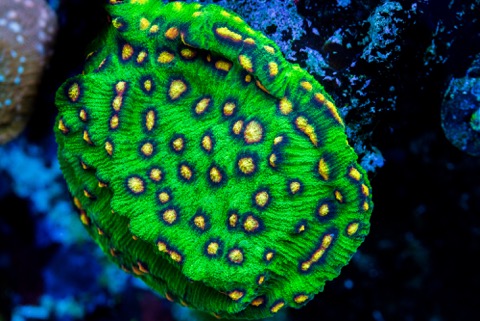
It has been almost two years since I visited Jason, and at the last time I visited his 700-gallon tank had only been up for a few months, so I was anxious to see how it had matured in that time. And knowing Jason, I was also anxious to see what other improvements and changes he had made in his tanks and holding and propagation facilities and what new corals he was growing out for release during this, one of the busy times of the year in terms of shows, frag swaps and travel.
As always, he and his lovely wife May, were incredibly gracious and answered all of my questions. Despite some thinking that he has some secret formula for getting and growing some of the most colorful corals in the hobby, I am convinced it is more his dedication, attention to detail and hard work that have gotten him to the pinnacle in the hobby for finding and propagating colorful corals.
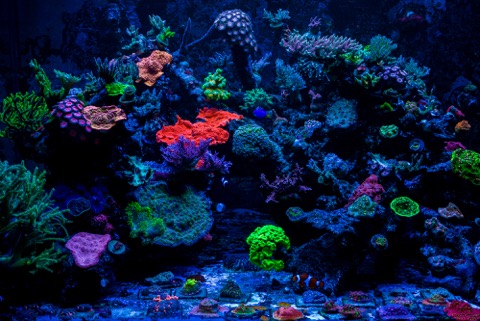
His hard work is shown in several ways. First on this my fourth, or was it my fifth, visit to his house, at least 3 of his tanks had been completely redone and at least two of the propagation vats. When I asked him why he did what I know to be a tedious task, and that not many would appreciate it, he said that to him the tanks looked overgrown and were not as pleasing to look at as he wanted them to be so it was time to redo them.
He also said he wanted them to be more efficient to work in, with the hope that they would be more productive in terms of producing corals. I found this to be an interesting explanation, as to some of us that forget that this is a hobby, Jason has gotten it to be the best of both worlds.

That is, while it is a business from which he derives his livelihood, it is still his “hobby”, in that he still gets immense pleasure from having the tanks look their best and enjoys looking at them as do us hobbyists. I know this, as he kept delaying my coming to visit until he had the tanks looking their best.
His hard work and dedication to the hobby is also shown in a number of other ways. He now makes fairly regular collecting trips to Indonesia with the goal of finding more unique and rare corals to bring back to us. I know that to most of us this does not sound like hard work, but having been on collecting trips, I know that while it is a labor of love it is also hard work to find beautiful corals.
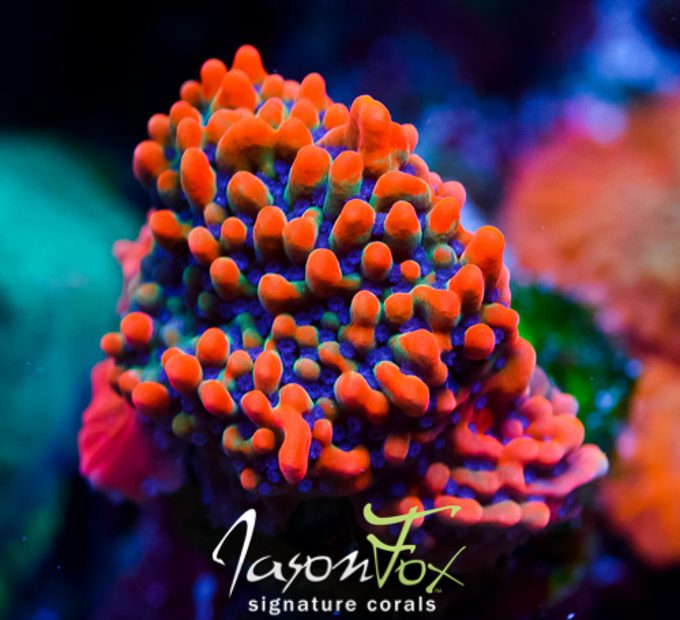
While the exotic location of Indonesia is idyllic, being on a live aboard for a week or sleeping in a hut above the reef and subsisting on bananas and fish while taking multiple exhausting dives to find a few corals to bring back is not quite the glamorous life we think it to be. And while Jason is still a fit young man, dehydration, dysentery, sunburn and bug bites still take their toll and greatly reduces how enjoyable the trips are for him.
Also for those of you who have not flown to the other side of the world, 24 hours plus on a plane, followed by long ferry and bus rides to get to the remote locations where the “new” corals are located is not a lot of fun. After seeing Jake’s presentation at ReefStock on the unique corals he found while diving in remote locations and what he went through and then having this confirmed by Jason, I know that there are still a lot of great corals for the hobby out there even in a location like Indonesia that has been a source for corals for over 30 years.
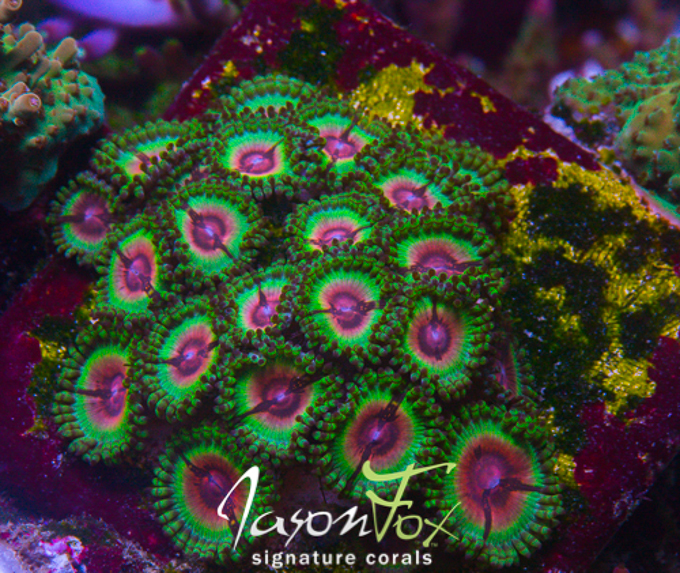
We are lucky that people with a keen eye for what is unique and what may turn out to be colorful are out collecting corals for us. If this were easy and fun I’m sure more of us would do it. I have been invited to go on such trips, but after talking with Jason I’m glad my sense of self-preservation won out.
In regard to travel, Jason not only travels abroad to collect colorful corals, but he also collects them here. Most of us that have been to the shows and swaps know that Jason and his colorful collection of frags is present at almost every one of them around the country. During most years, Jason is at over 30 events, which means he is gone from home on the weekend for more than half the weekends each year.
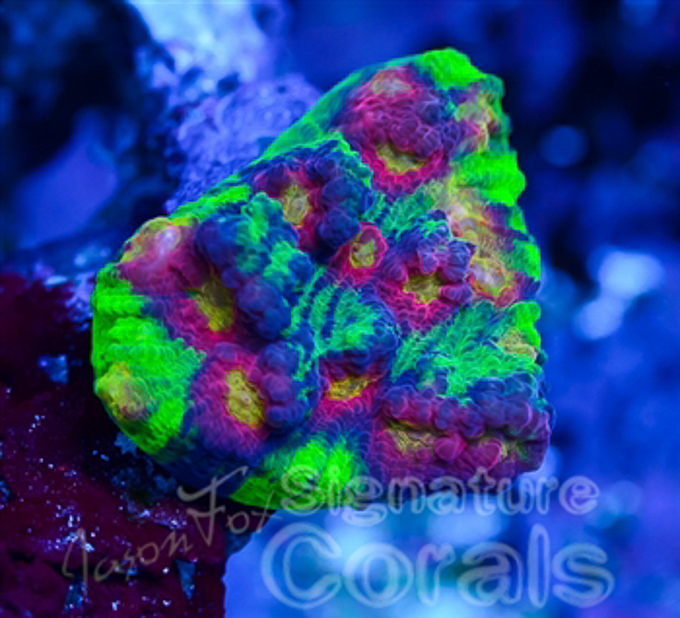
This would be a pain in and of itself, but he also has to haul his frags and the related display equipment with him as well. While this is obviously an opportunity for Jason to sell these frags, what many of us do not appreciate is that Jason also collects at these shows as well. Often before the shows open, Jason visits the other vendors and selects some of the choice corals that they have to propagate and add to his collection.
Some may view this as a negative for the hobby, but the converse is true. I say this as by having Jason have it, the coral is virtually assured of being kept alive and propagated so down the line it may be made available to more of us than if only one hobbyist had it in one location. While I have been collecting corals for a long time I have come to realize that some “rare” corals have only made an appearance in the hobby a few times or occasionally only once.
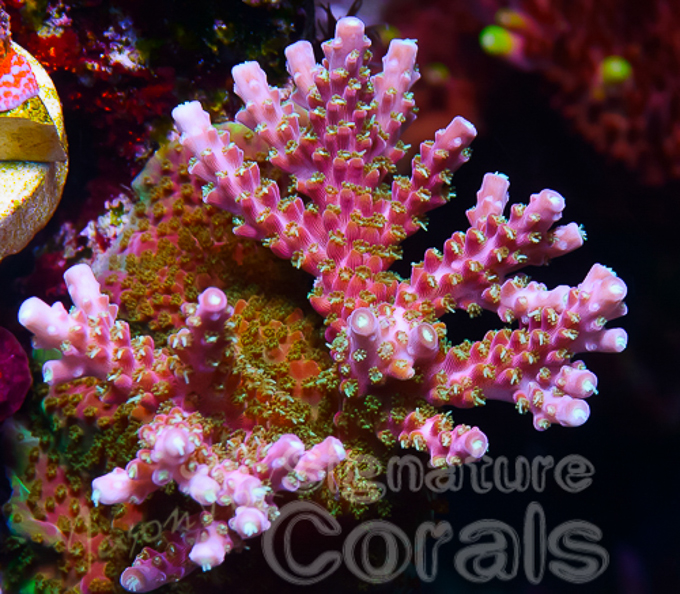
I wish that when they had, someone had made the effort to propagate them and distribute them to other hobbyists. This is especially true of some of the corals that I saw in the early to mid 90’s that I have not seen since. That is why I appreciate that Jason and several other “coral farmers” are doing this now and as a result hopefully in the future we won’t regret that a coral was seen once and then disappeared forever.
Needless to say, getting frags either way, and that is also how Jason gets corals from the wild, frags not colonies, requires not only patience but time and effort. This time and effort is not just a result of taking the frag, sticking it on a plug and letting it grow to be sold, but there is also other work required as well. First, when the frag comes in it needs to be quarantined.

This does not just mean giving it a dip and forgetting about it either. As I saw at all of the other large coral farming facilities, quarantining new corals is one of the things that they all take very seriously. In Jason’s case, new frags are first taken off of any media that they are attached to, dipped in a couple of different coral pest removers and then placed on a clean fresh plug and placed in the first quarantine tank.
They are grown in there for at least a month, then removed and attached to a second new plug and then placed in a second quarantine system. While they are in these quarantine tanks they are observed and moved to try and get them to optimize their coloration and health. As we have seen a change in positon of a coral of as little as a couple of inches can dramatically change its color.
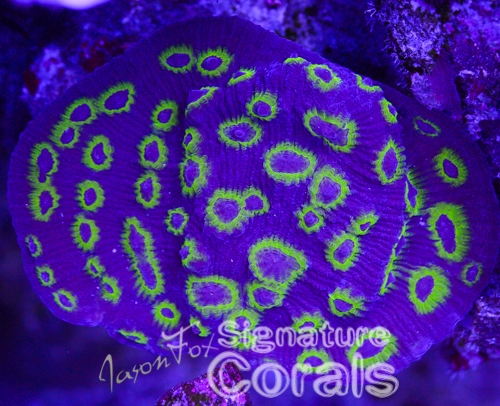
So while they are in quarantine Jason tries to determine which placement will produce the best color in the coral. Over the years Jason has gotten very good at seeing the potential that a coral may have for coloring up, but even he fails from time to time. While to my eye even his “failures” have good color, to him if they do not possess bright color and strong growth so they will look good and thrive for hobbyists he will not start propagating them.
So considering this, I now understand while Jason plans on most of the corals he selects to take two years or more before he releases most of them to the hobby. What else I found interesting is that many of the most select corals he has he grows in one of his display tanks rather than in mass production in the 5 200-gallon plus production vats he has.
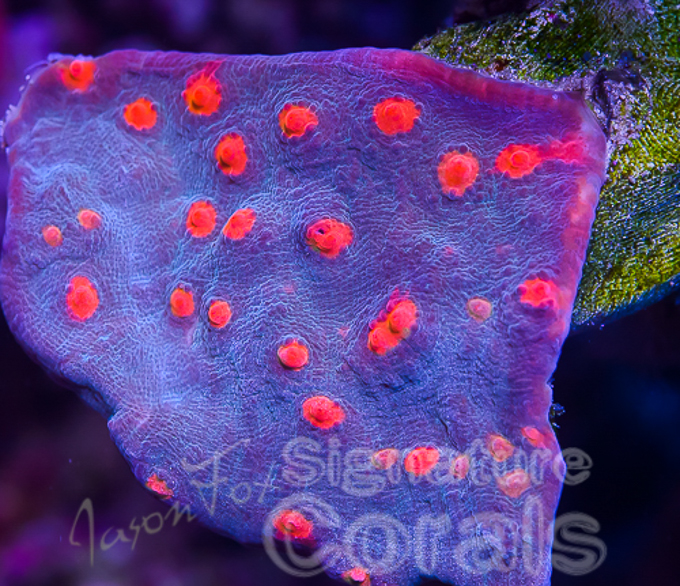 While this may limit the production of these corals, it allows Jason the opportunity to watch these corals closely and thus keep a close eye on them in case anything bad starts happening to them. But, as a hobbyist, like us Jason likes to have them in his own display tank where he can enjoy their colors and beauty, just like many hobbyists would. As I said, Jason is still a hobbyist, and to me this shows it.
While this may limit the production of these corals, it allows Jason the opportunity to watch these corals closely and thus keep a close eye on them in case anything bad starts happening to them. But, as a hobbyist, like us Jason likes to have them in his own display tank where he can enjoy their colors and beauty, just like many hobbyists would. As I said, Jason is still a hobbyist, and to me this shows it.
While being a hobbyist, he takes the hobby to a whole new level in a couple of ways. He has been in the hobby for over 25 years, and while at this point many get burned out, but Jason seems as excited by the hobby as the day I first met him. His enjoyment for the hobby and love for colorful corals eventually led him to make it a full-time business over seven year ago.
When he switched over from it being a hobby to a business he converted his entire basement into a massive fish room with tanks and vats and equipment occupying virtually every empty space within it. But he has not been satisfied with how it was set up so he has done at least four remodelings since the initial set up, making it larger and more efficient with each renovation.
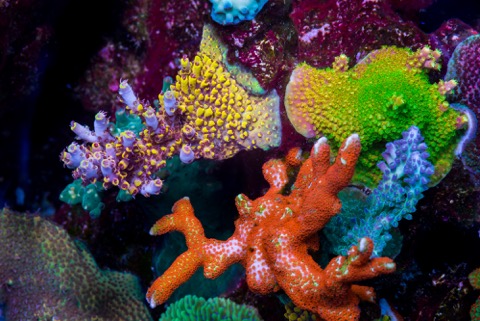
During this time, he has brought his coral collection to between 2000-2500 different corals. He has not counted them all, and I gave up after trying when I reached over 1700 corals. More amazing than that though is that he knows the name of every coral he has as well as where it is located and not just the big name ones.
So when I asked to see the Yellow Jacket or Papa Smurf he showed me right were they were with no hesitation. For someone who even forgets his relative’s names and calls his daughter by his dog’s name this is impressive. You have to really love what you are doing to put in the effort to remember all of the names for every coral you have.
He currently has 4 tanks ranging in size from 700 to a 180-gallon tank in his upstairs family room. In addition, there are 5 200-gallon plus propagation vats as well as two totally isolated quarantine tanks. These tanks and propagation vats run as two separate systems so that if a problem arises it can be isolated and not hit everything.

Even though he quarantines everything problems still can arise. Recently when he added some new tangs he had a problem with Bryopsis. Apparently some of this problematic algae came in in the gut of one of the tangs and spread rapidly in on of Jason’s systems. It took a while, but he was finally able to beat it with the use of Fluconazole.
To me this is an interesting use of this product as it is a drug used in humans to treat fungal infections. Now it is being widely touted as a cure for this pest. I have no idea how someone even came to try it on this algae, but I was happy when Jason told me it had worked for him.
I am always happy to hear of something that works and even happier when I get confirmation of it from a trusted source. And to be honest, while I don’t want anyone in the hobby to have a problem, it makes me feel like I am not alone when others have the same problem as I had a Bryopsis outbreak for the same reason last summer and it took me 5 months to finally beat it.
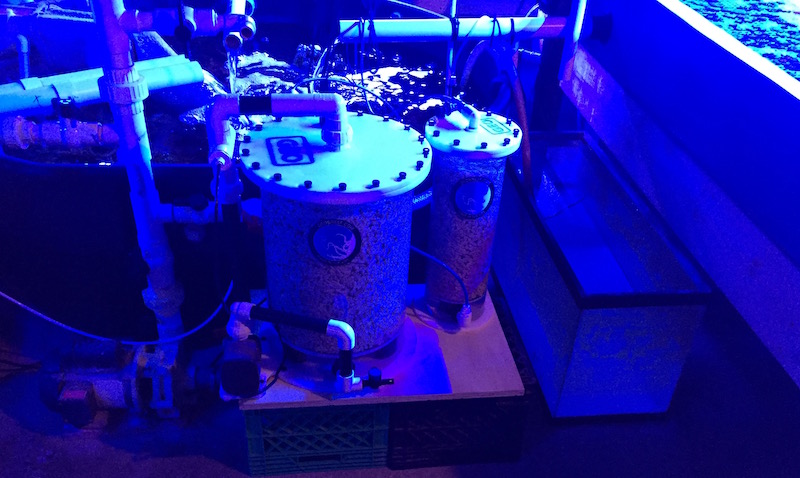
When you first look in his tanks, what impresses you beyond the health and variety of corals present and the fat healthy fish, is that there is virtually no algae or any other pest in any of the tanks. The rocks are clean, the glass is spotless even in the unreachable areas, and even the filters and sumps look immaculate.
Jason attributes this to several factors, none of which is because he keeps his nutrients exceedingly low. In fact, his nitrate level is 5-10 while his phosphate level is .08-.10. he does this because he found that when he kept these nutrients at lower levels the growth of the corals suffered. So as a result, over time he added more fish, mostly herbivores, feeds more and thus gets faster and better growth in his corals.
He also attributes his fast growth to his running all of his tanks bare bottom, so he does not get any detritus build up. The flow in his tanks and vats averages 15-20 times the volume of the tank each hour, so for say his 700-gallon tank the flow in it is a whopping 14,000 gallons per hour.
The water does not go through his sump and skimmer that often though, only 4-8 times per hour, so that is not where the flow in his tanks is generated from. Instead each of his tanks has multiple powerheads or closed loops and these produce the flow within the tanks that keeps them from having any detritus anywhere in the tanks. In addition to this strong flow generating good growth, Jason has also become a firm believer in feeding his corals on a regular basis.
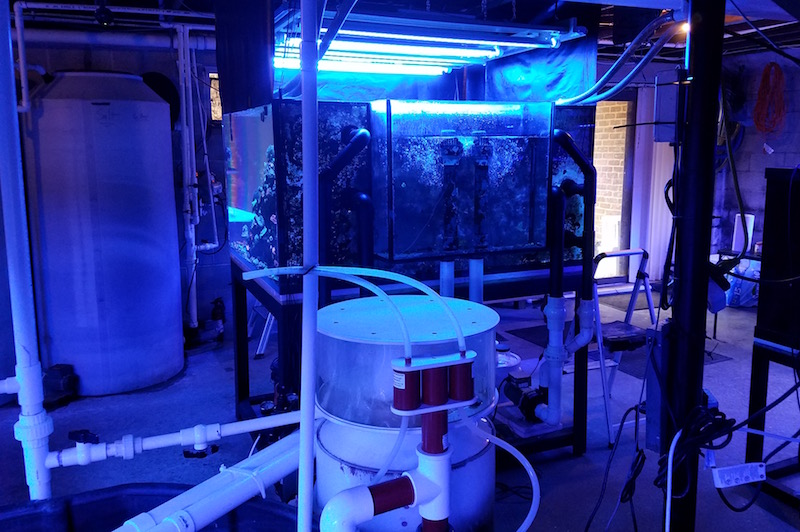
For this, his food of choice has been Rod’s coral food which he feeds every other day. He also feeds his fish nori as well as various pellets, flakes and frozen foods. His fish are as fat and happy as his corals as a result. In the early days of his business he kept many of his tanks with a low fish load and with low nutrients as that was the rule then, but over time he found that the corals grew slowly and did not have great colors until the nutrient levels and fish populations increased.
In addition to the strong flow and nutrients being present, Jason uses a variety of lights above his corals. Over time he has found that certain corals grow faster and show optimal coloration under different lights. As a result, he seemingly is constantly tinkering or moving a frags from one light source to another to try and find which light the coral most prefers and which light produces optimal coloration.
As a result, he uses not only LEDs, but also metal halides of various colors as well as t-5s. Some corals do well under all three, while others only show their best coloration under one type of light. Some even only show their best coloration when they are at one level in the tank and when they are moved higher or lower their colors are not as intense.
Getting to see the colonies of these corals lets you see how a difference of just a couple of inches can change the color of the coral. Some times even dramatically. Given that some of the colonies of these corals are 6-8 inches or more in size it is possible to see how these relative small differences in placement relative to the light, can change the coloration.
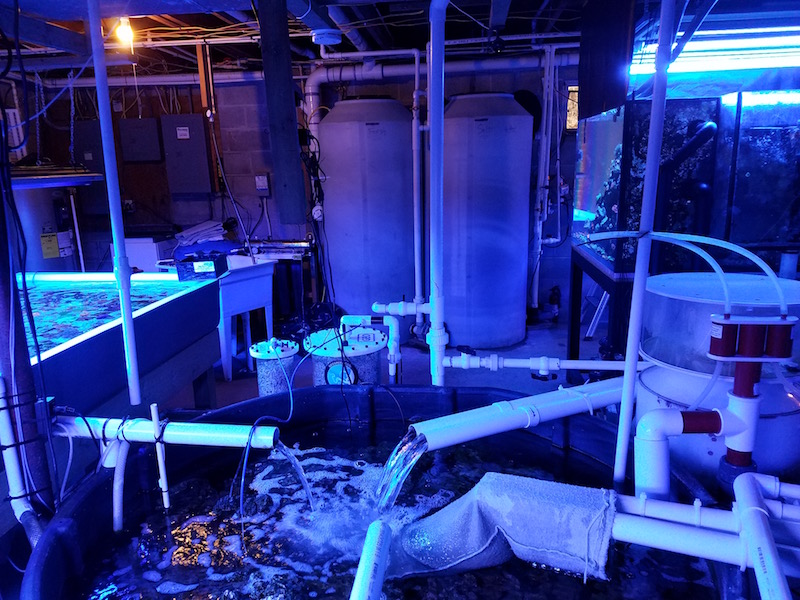
This is significant in that when we buy frags we assume that something as seemingly trivial as placement relative to the light source or even the light source itself will not have an impact on its coloration, when in fact it greatly affects it. Getting to see some of the most brightly colored corals in the hobby made me realize how many factors have to be optimal in order for a coral to show its best coloration.
So what are some of the secrets to Jason’s success and the success of his corals. As I mentioned above I think much of it is due to his doing the little things to keep the conditions of his tanks at optimal levels. For example, he cleans his skimmer regularly to improve its efficiency.
Besides regularly flushing out the scum cup, he does not let the neck get full of sludge and thus reduce its efficiency. He also totally breaks down the pump and the entire unit regularly as well, to further reduce the likelihood of it not functioning properly. His 1800-gallon system gets a 600 gallon (30%) water change every two weeks where any detritus and other dirt is removed as completely as possible.
He runs an oversized calcium reactor to keep the alkalinity in his system as stable as possible between 8-9. He also flushes it out regularly and adds new media as soon as it drops even a small amount. He used to run the alkalinity at a lower level, but he found that once he allowed the nutrient levels to rise the corals started consuming more carbonate, so as a result keeping the level in this range gives him a larger margin for error should something go wrong.
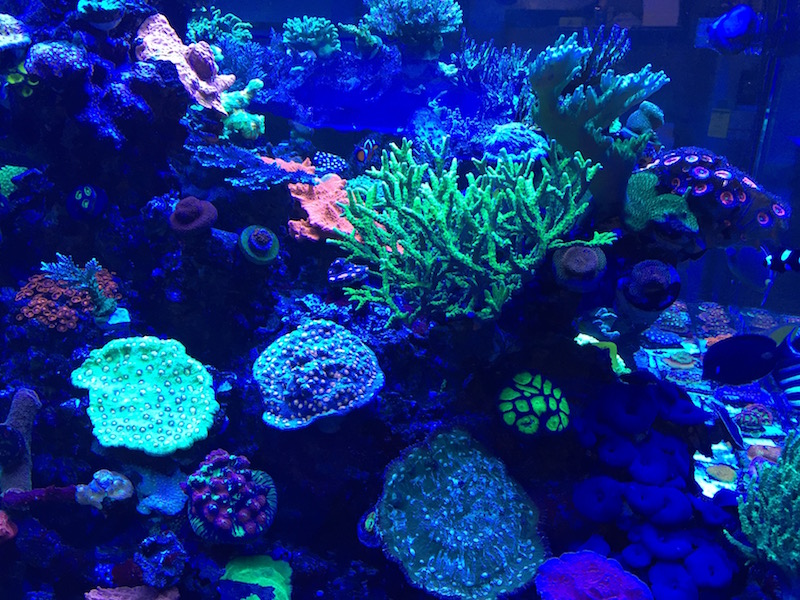
His lights are cleaned regularly so that their intensity does not fluctuate due to their being dirty or having salt creep on them. Again this is done to make his tanks be as stable as possible. All of this sounds easy to replicate, and it is, but after visiting Jason several times two other things are apparent. One, while he has changed and moved things around one of the biggest things he has done is make it easier to do all of this maintenance.
Unlike for many of us he can get to all of his equipment easily and thus it is easy to clean and maintain or see a small problem before it becomes a big one. Second, while it is his job, it is clear that he still enjoys what he is doing. Unlike for many of us he does not seem to hate doing a water change or testing the parameters of his tank.
He is also very organized and keeps track of what he needs to do as well as the parameters of his tanks. For this he keeps a whiteboard in the room and has it filled not only with the parameters of the tanks but also with the tasks he needs to perform on each tank and when. I thought this was such a good idea I am now copying it myself to try and make managing my tanks easier and more organized.
As I said at the beginning, taking recent road trips has provided me the opportunity to not only see more new corals, but also to learn new things from people I trust, which I will try in my own tanks and which I will share with you. Visiting Jason Fox showed me once again that for some this can be a business, but that it is still possible to enjoy this as a hobby as well.
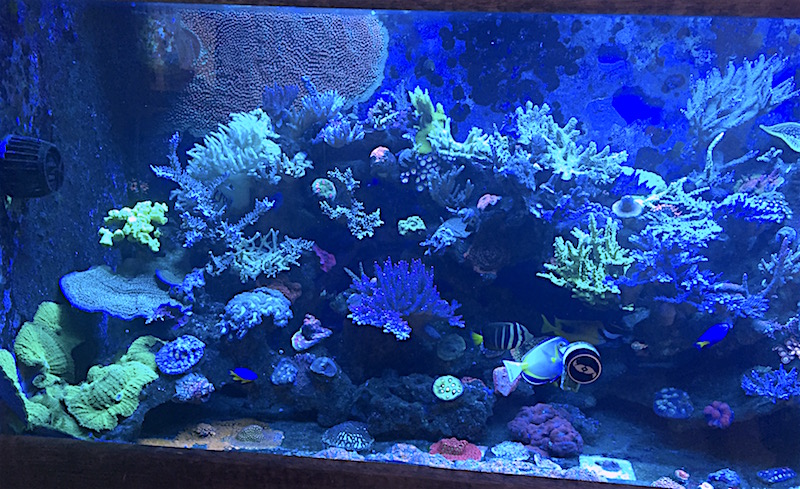
Even though Jason is viewed as a businessman in this hobby, it still is very much a hobby for him. I say this as despite him spending much of his days in his fish rooms fragging and doing maintenance he still has a big display tank in his family room that he can enjoy with his wife and kids at night when they are relaxing as well as a freshwater plant tank that shows how he still loves every aspect of the hobby.
He also has an assortment of rare Tangs showing he likes fish too. To me being able to sit back and enjoy looking at a beautiful tank is the sign of it still being a hobby. Jason will be speaking for the first time at the annual Houston Frag Swap on April 1st. Hopefully he will get the turnout he deserves and in return reveal the secrets that he did not tell me. Enjoy his presentation.


